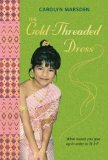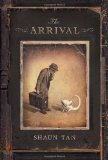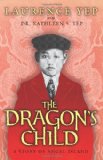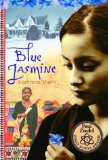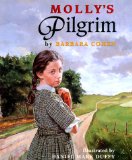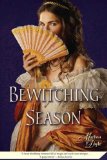 It’s actually almost a bit embarrassing how much I liked this book. The fact is, I’m a sucker for romantic historical fiction, particularly anything taking place in England in the 1800s. Bewitching Season takes place as Victoria is about to come to the throne. The Leland sisters, daughters of a Viscount who have inherited family magic, are about to have their very first season. Pen is excited, but Persy, who prefers books, is terrified. She much prefers her studies and is terrified at the idea of having to converse with strangers. When the girls’ governess and magic tutor goes suddenly missing the girls have more serious matters than catching husbands to attend to.
It’s actually almost a bit embarrassing how much I liked this book. The fact is, I’m a sucker for romantic historical fiction, particularly anything taking place in England in the 1800s. Bewitching Season takes place as Victoria is about to come to the throne. The Leland sisters, daughters of a Viscount who have inherited family magic, are about to have their very first season. Pen is excited, but Persy, who prefers books, is terrified. She much prefers her studies and is terrified at the idea of having to converse with strangers. When the girls’ governess and magic tutor goes suddenly missing the girls have more serious matters than catching husbands to attend to.
This book does an excellent job of combining the magical with the time period. Victoria was very much under pressure to relinquish her powers to Sir John Conroy rather than rule in her own right. Bewitching Season infuses his treachery with a magical element.
The vocabulary of the book is challenging, but much of it will be manageable to readers familiar with the time period. Period specific vocabulary includes: megrims, tincture, grimoire, reticule, cosseted, equipage, livery, fractious. This book has a sequel, Betraying Season
Great for:A perfect mix of romance, witchcraft and intrigue, Bewitching Season is bound to enchant teenage girls who dream of a time of balls, titles and handsome young suitors. It will probably be a hit with lovers of Austen or Heyer, although it is not as witty and clever, it is still very enjoyable.
Sex, Nudity, Dating – This is a romance after all, but very much in keeping with the times. There is definitely a bit of kissing (both of hands and real kissing), embracing and fluttering hearts and the like. The girls’ younger brother teases them about boys. And of course, there are proposals of marriage. Also to be expected is a certain amount of discussion of ladies underthings and fashion, so petticoats, corsets, and decolletage are all mentioned. Not unusual for the times, one of the girls has a beau who is five years older than her. In keeping with the magical theme, love spells are cast. Gossip about the royal family and random members of the peerage is more scandalous (mentions of the king’s illegitimate children, an affair between two people, a child born out of wedlock, a mention of a mistress), but none of it is explored more than a mention in passing. Other random bits: As children a neighbor boy dared them to climb a tree and then stood underneath while they covered themselves and tried to figure out a modest way down. A boy shares that he knew a set of twins at school but they were impossible to tell apart with their clothes on (as he attended an all boys school, nothing sexual is implied here, simply nudity). Persy binds her chest in order to pass as a boy. A man is blackmailed using the information that his older brother ruined their 14 year old cousin.
Profanity – “My God,” although Penelope is chided for taking the Lord’s name in vain. A boy gets as far as “bast-” then cuts himself off. “Hell,” several times, “Oh for God’s sake,” “Damn” twice, “damned” twice.
Death, Violence and Gore – Their governess warns the girls that the last execution for witchcraft was less than 100 years ago. A woman is abducted at gunpoint. There is talk that Lochinvar’s mother died from a witch’s curse. There is a small amount of sibling hair pulling and ear twisting. In a very teenaged way, Persy ponders how to murder her annoying little brother without upsetting her parents.
Drugs, Alcohol and Smoking – A milliner drinks gin with her breakfast. Strawberry cordial is presented and served, but the only person we see drinking it is the girls’ mother. Persy drinks too much punch, but it’s unclear whether or not she knew it had alcohol in it. Lady Harrow spills a glass of wine at dinner. Miss Allardyce sips wine with dinner. Persy sips champagne. Mama has a glass of pomegranate cordial.
Frightening or Intense Things – At one point Charles notices a stranger has been watching their house. A woman is held captive and has been ordered to use her powers to assist some nefarious doings. Persy and Charles investigate Kensington Palace and are in constant danger of being caught. At one point the girls are in mortal danger. I wouldn’t call it scary, just the right amount of tension for intrigue.
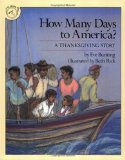 After soliders visit a small boy’s home, his family immediately leaves for America under the cover of night. They take nothing with them except a change of clothes and money to pay their fare on a small boat. Across the waters of the Caribbean they sail, hoping for refuge in America.
After soliders visit a small boy’s home, his family immediately leaves for America under the cover of night. They take nothing with them except a change of clothes and money to pay their fare on a small boat. Across the waters of the Caribbean they sail, hoping for refuge in America.

